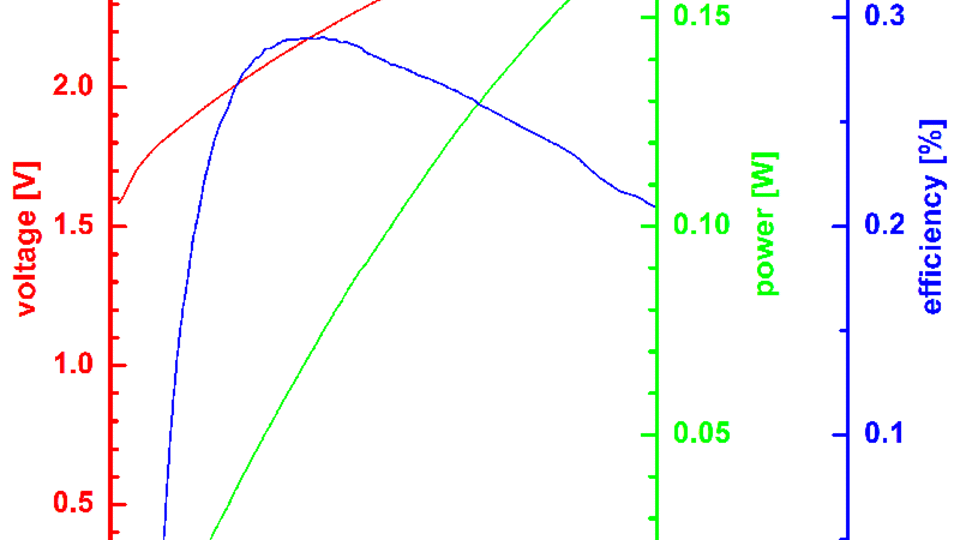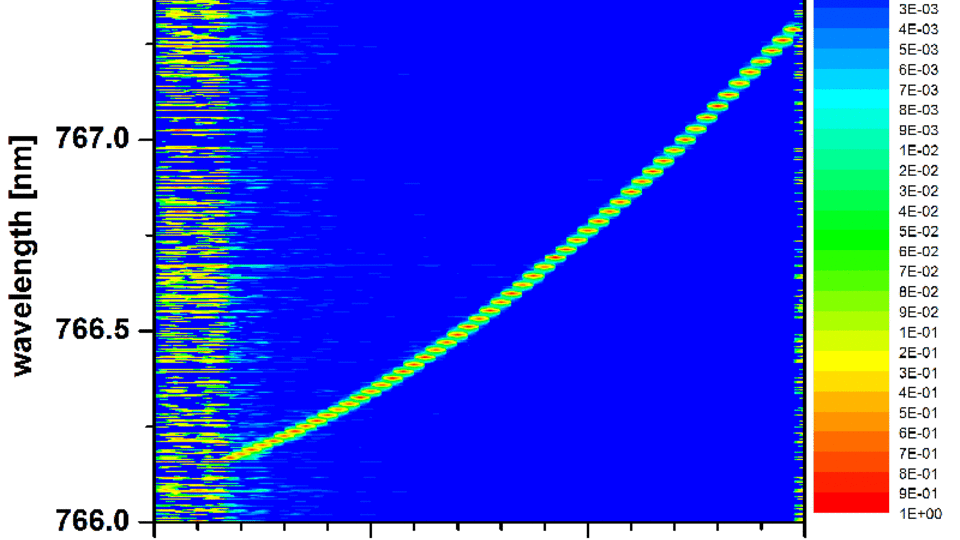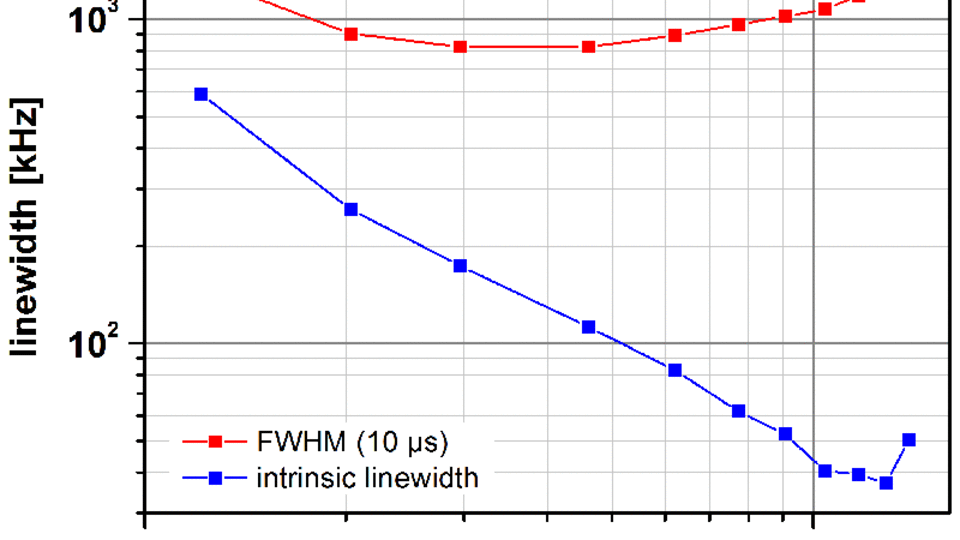DFB diode lasers for precision spectroscopy of potassium (767 nm)
Fig. 1: Single-quantum well, RW DFB diode laser with 1.5 mm chip length emitting at 767 nm: power, voltage, and conversion efficiency vs. injection current at a mount temperature of 20°C.
Fig. 2: Emission spectrum vs. injection current of the same diode laser. Individual spectra are normalized to their peaks so that the color coding displays the side mode suppression ratio (range: 0 … 40 dB).
FBH has developed narrow linewidth, high-power distributed feedback (DFB) diode lasers for quantum optics experiments on ensembles of ultra-cold potassium atoms. Based on its latest results on the realization of DFB lasers [1] for Rubidium Bose-Einstein condensation (BEC) and atom interferometry applications, FBH has now developed DFB lasers that are suited for the corresponding experiments on potassium. This development was carried out within the framework of a project supported by the German Space Agency DLR. Ultimately, these activities aim at testing the equivalence principle by comparing the free fall of rubidium and potassium ultra-cold atomic ensembles by means of an atom interferometric measurement in space [2].
The development of narrow linewidth, high-power DFB diode lasers becomes a more and more challenging task in terms of laser design and fabrication technology as the emission wavelength is shifted from 780 nm towards shorter wavelength. This is due to increased absorption in the overgrown gratings with decreasing wavelengths. An improved design of the grating layers has been implemented and resulted in better grating and device performance.
The recent results obtained at FBH for single-quantum well, ridge waveguide DFB diode lasers emitting at 767 nm clearly show an electro-optical performance that is comparable to the performance of the DFB diode lasers for 780 nm. With a 1.5 mm long chip an output power of more than 150 mW can be reached at an injection current beyond 250 mA, see Fig. 1. The slope efficiency corresponds to 0.68 W/A and is hence comparable to 0.6 A/W … 0.8 A/W recently reached with DFB lasers for 780 nm. Depending on the actual chip temperature the wavelength can be current-tuned continuously by more than one nanometer with single mode emission being maintained, see Fig. 2 . The side-mode suppression ratio reaches 40 dB at injection current settings beyond 150 mA. A self-delayed heterodyne linewidth measurement reveals a short term linewidth (10 µs) of about 1 MHz full-width-at-half-maximum (FWHM) and an intrinsic linewidth of a few 10 kHz FWHM at large injection current settings, see Fig. 3. The instrinsic linewidth is deduced from the white noise floor of the frequency noise power spectrum and hence excludes technical noise, mostly flicker noise of the current source.
This work is supported by the German Space Agency DLR with funds provided by the Federal Ministry of Economics and Technology (BMWi) under grant number 50WM0940.
Publications
[1] T.-P. Nguyen, M. Schiemangk, S. Spießberger, H. Wenzel, A. Wicht, A. Peters, G. Erbert, G. Tränkle, "Optimization of 780 nm DFB diode lasers for high-power narrow linewidth emission", accepted for publication in Appl. Phys. B
[2] T. van Zoest, et al., "Bose-Einstein Condensation in Microgravity", Science, 328, 1540-1543 (2010).
FBH research: 07.05.2012


